Negros Island is home to a diverse range of species, which makes sense given the island’s diverse habitats.
A solitary island, None of the animals that live on Negros Island are more spectacular and magnificent than the birds that live In the Balinsasayaw twin lakes.
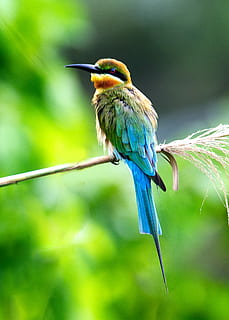
1.Blue-tailed Bee-eater
Elegant, slender open-country bird that can often be observed flying or perched on exposed snags or telephone lines. Green overall with a blue tail, narrow black mask, and rufous neck as an adult; vivid rufous underwings visible in flight. The juvenile is similar to the adult but paler, with a tannish throat and a shorter tail. The adult’s large center tail feathers are missing. With broad, sharply pointed wings, a long tail, and a big bill, the flying bird has a characteristic shape. .
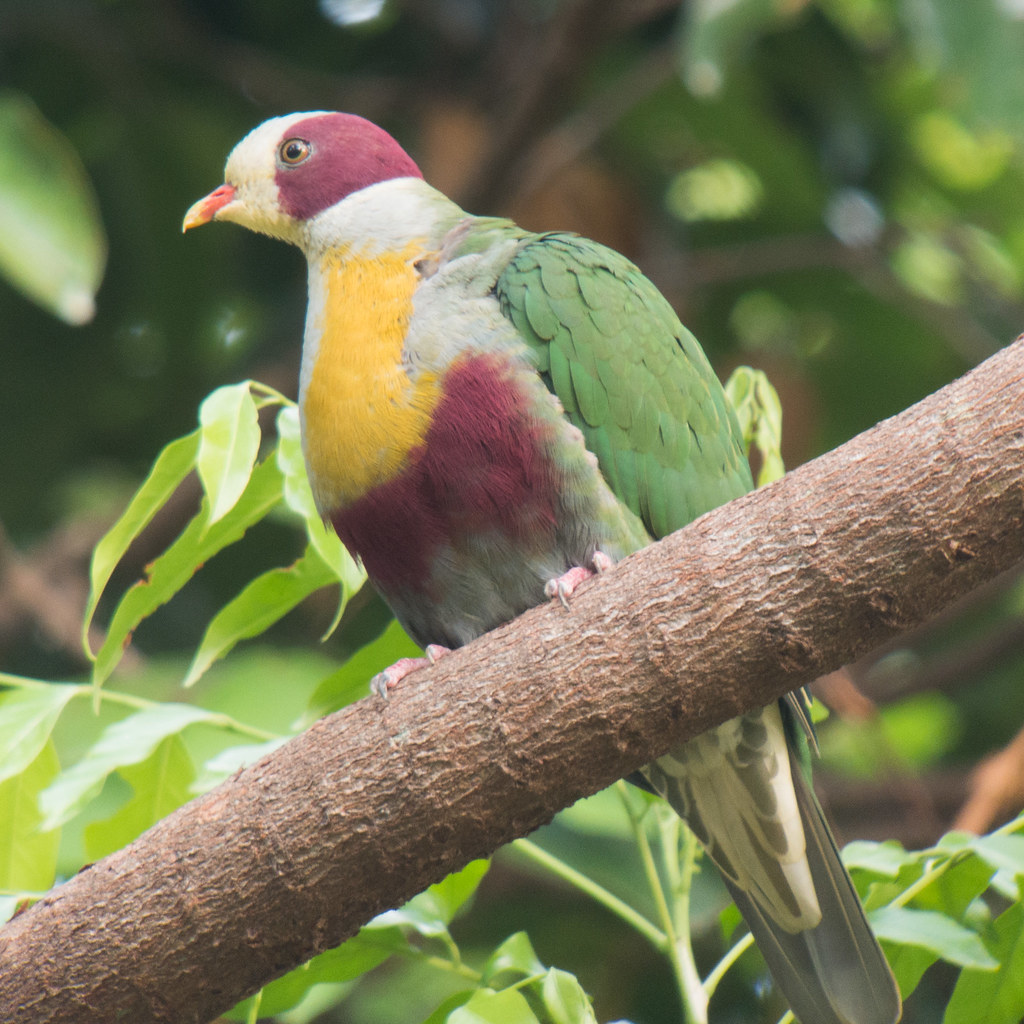
- Yellow-breasted Fruit-Dove
A lowland and mid-elevation forest canopy dove of modest size. Green upperparts, tail, thighs, and sides, gray crown and sides of neck, yellow breast, maroon patch on the abdomen, and maroon band from the eye around the rear of the head distinguish this species. The Yellow-breasted Fruit-Dove is similar to the Flame-breasted Fruit-Dove, except it has a yellow chest instead of an orange chest and pale gray in front of the eyes. A deep, downslurred “woo-oo” is used in the song.
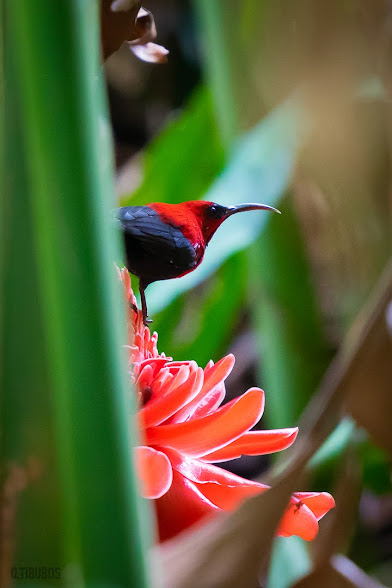
- Magnificent Sunbird
A beautiful little bird found in the western Visayas’ lowland and foothill scrub and gardens. A bright red head, back, and breast, a purple forehead, a spreading purple mustache stripe, a purple tail, black wings and belly, and a brilliant yellow patch on the lower back distinguishes the male. Males lack the purple throat, and females are mostly olive with striking reddish wings and tail, similar to Purple-throated. The call is a high-pitched “chik!” repeated several times. ”
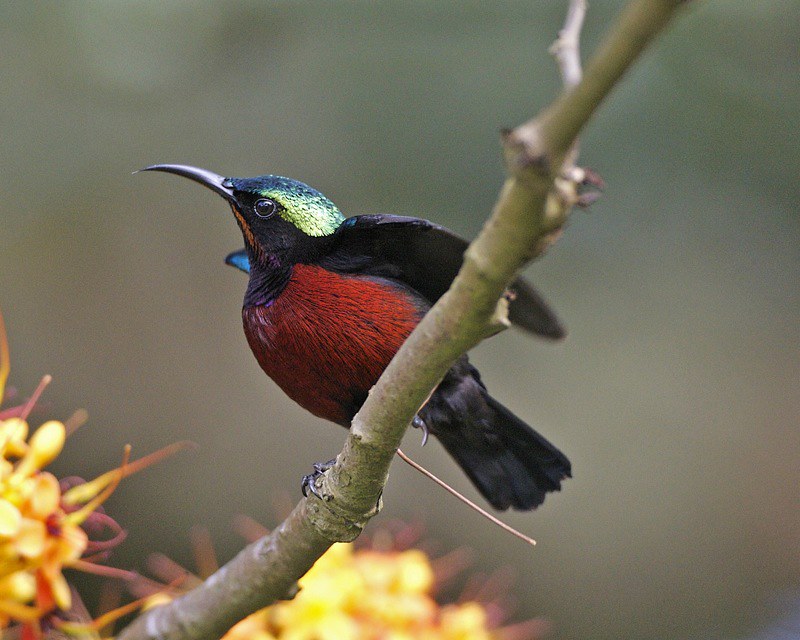
- Purple-throated Sunbird
A tiny bird that lives in wooded places from the lowlands to lower mountain elevations. Dark upperparts with a greenish head and rump, deep purple neck and top chest, and vivid red lower chest and upper belly on males. The crimson on the chest of Sulu and west Mindanao birds is replaced by yellow with an orange wash. Males are distinct. Female looks like a lot of other drab female sunbirds. However, it has a brown wing and a yellow brow and chest. “tsweep!” is a sharp upslurred call. ” ”
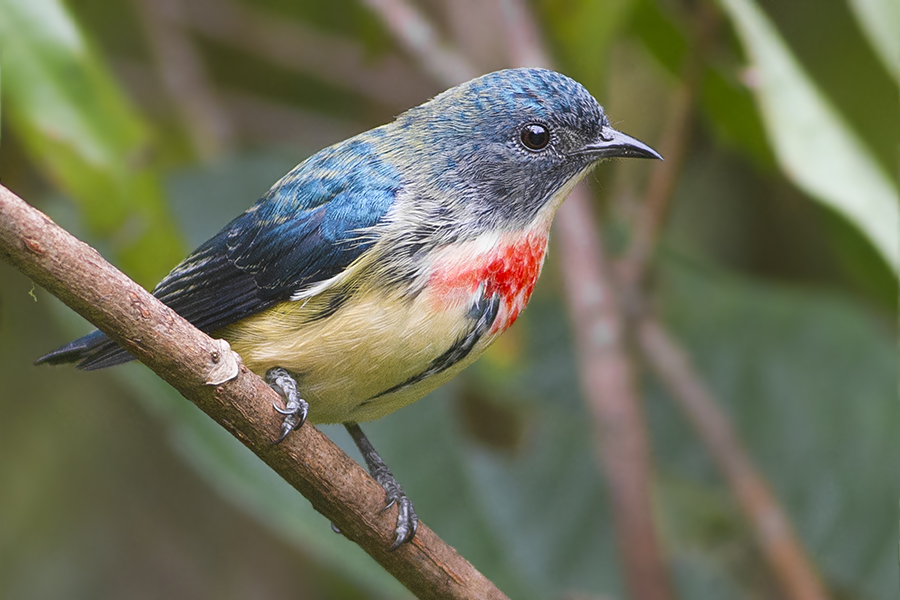
- Fire-breasted Flowerpecker
Tiny songbird found in the upper ranges of hills and valleys, as well as forested summits. Adult males are dark blue above and soft creamy white below, with a black stripe and a brightly crimson spot on the breast that looks like a bloodstain. Females are much plainer, with brownish-olive upper parts and off-white lower parts; they lack the white throat seen in Plain and female Scarlet-backed Flowerpeckers. The song is a sequence of high buzzing notes followed by a trill, delivered from a high and exposed perch.
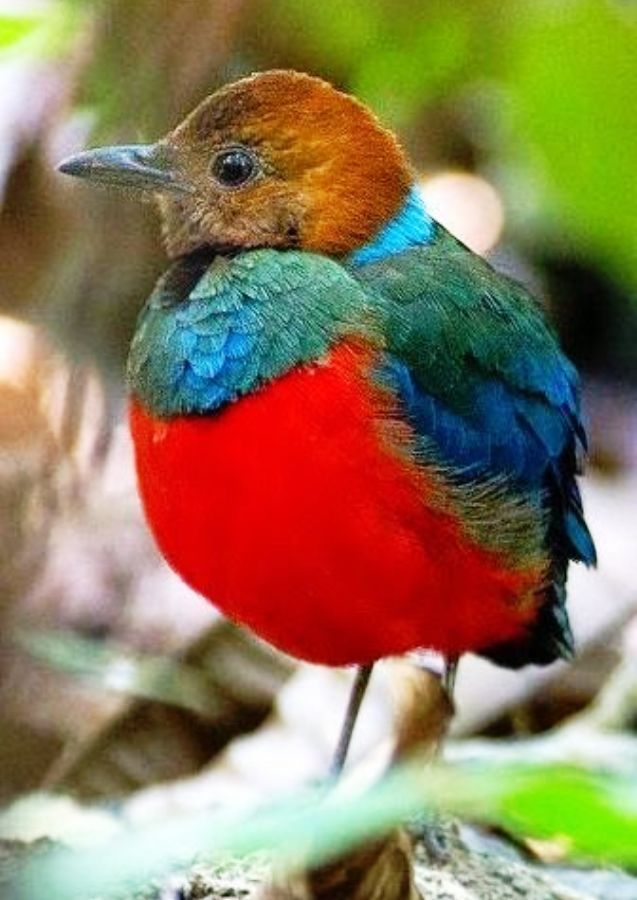
6.Blue-breasted Pitta
A chubby, short-tailed, long-legged terrestrial bird with a ruddy-colored head, a red belly, a black throat, and a blue chest band. The juvenile has a horn-colored beak with a pale tip and base, as well as blue on the rump and tail. In the lowlands and hills, singles and couples live in forest, degraded patches, and bamboo thickets. The smaller size, black neck, lack of a pale whisker, and more pronounced ruddy head colour distinguish it from Whiskered Pitta. “waaaaaopop-aaaaawwwwwow” is a two-part quivering whistle with the first part rising and the second half mournfully descending: “waaaaaopop-aaaaawwwwow.” It also emits a piercing “whit” alarm sound.
For a guided bird watching tour in Balinsasayaw twin lakes please contact us